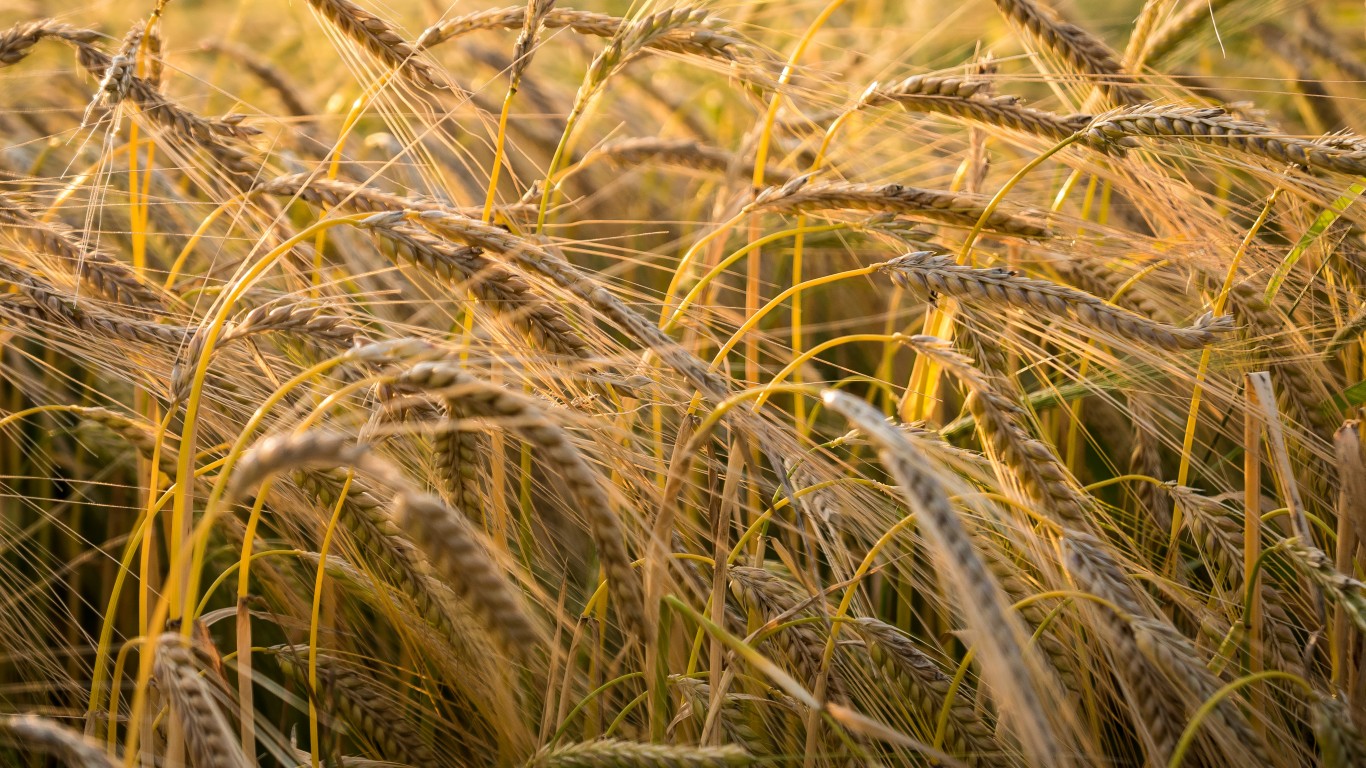
The history of Ukraine and Russia goes back more than 1,000 years, and Russia’s invasion of its long-time neighbor on Feb. 24, 2022, is just the latest chapter in the long, tragic, and complicated saga of the two nations.
To gather a list of facts about Ukraine, 24/7 Wall St. reviewed the CIA World Factbook page on Ukraine.
Russian President Vladimir Putin said on the Kremlin website last year that Ukrainians and Russians are “one people,” to lay the groundwork for justifying the invasion. Putin is basing his claim on the fact that in the 10th century, Ukraine’s capital of Kyiv was the center of the first Slavic state, Kyivan Rus, and the birthplace of both Ukraine and Russia. The destinies of the two countries have been intertwined ever since. (See how Russia and Ukraine military spending compares to the world.)
With few natural borders to protect it, Ukraine over the centuries has fallen victim to Mongol conquerors from central Asia, Polish and Lithuanian armies from the west and north, and Russian forces from the east.
The Dnieper River, one of the main geographical features of Ukraine, eventually became the de facto demarcation line between the western section of Ukraine, overseen by Poland and later the Austrian Empire, and the eastern part of Ukraine, controlled by the Russian Empire, which suppressed the Ukrainian language and culture. Ukraine still lives with the legacies of this divide.
Ukraine experienced a very brief period of independence after World War I before it became a Soviet republic in 1922. Under Soviet leader Joseph Stalin, Ukraine suffered through the forced collectivization of farms, which led to famine that killed millions of Ukrainians in the 1930s. Little wonder, then, that Ukrainians welcomed invading German armies in 1941 with the traditional greetings of bread and salt.
Since the fall of the Soviet Union in 1991, Ukrainian governments have alternated between pro-Western to pro-Russia, reflecting the national divide. (These are Ukraine’s leading trading partners.)
Crimea, given to Ukraine by the Soviet Union in 1954, was annexed by Russia in 2014. A Russian separatist uprising in the eastern Donbas region followed. Earlier this year, the Kremlin recognized the independence of the region’s republics of Donetsk and Luhansk.
Click here to see 32 things you may not know about Ukraine
1. A large land area
Ukraine has over 233,000 square miles of total area, about 9,350 square miles of which is water. It is the 48th-largest country on Earth. Ukraine is almost four times the size of the state of Georgia and slightly smaller than Texas.
[in-text-ad]
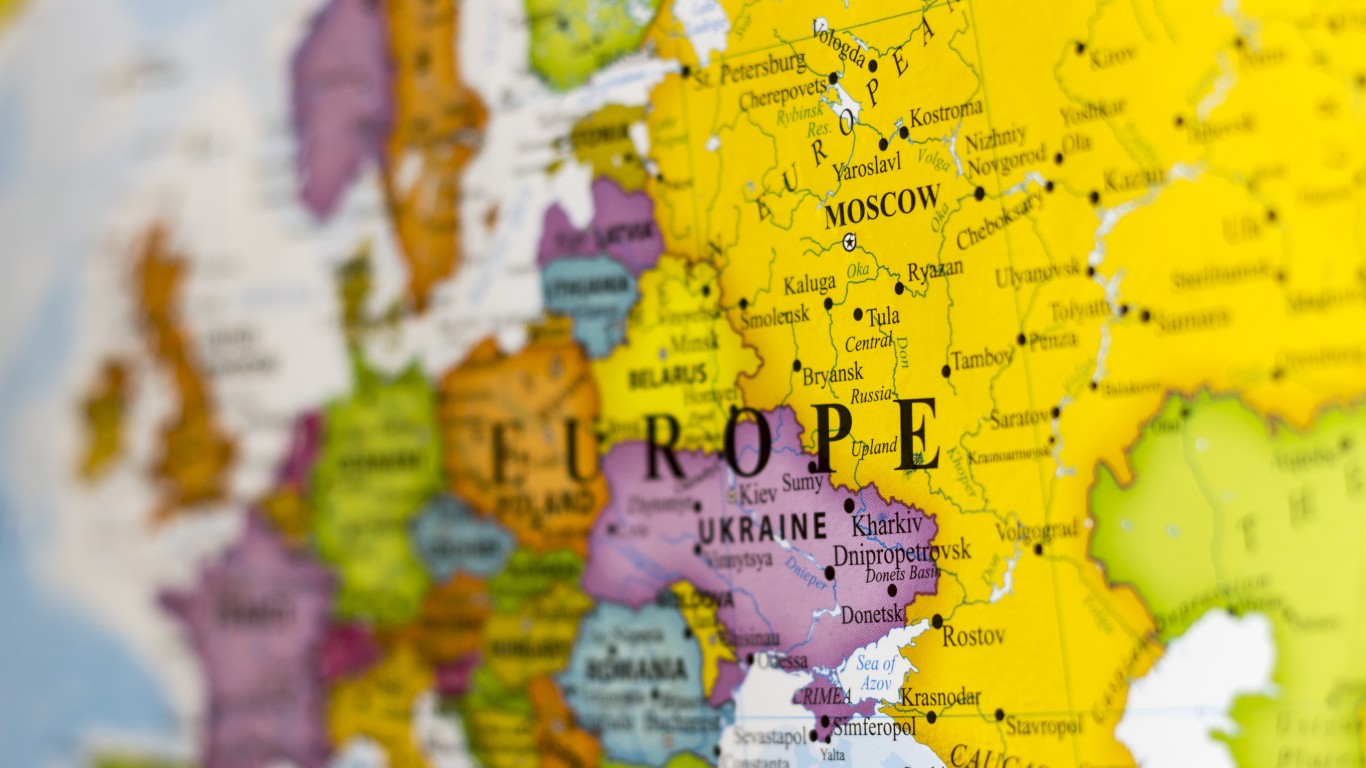
2. Bordering countries
Ukraine borders seven countries: Belarus, Hungary, Moldova, Poland, Romania, Russia, and Slovakia.
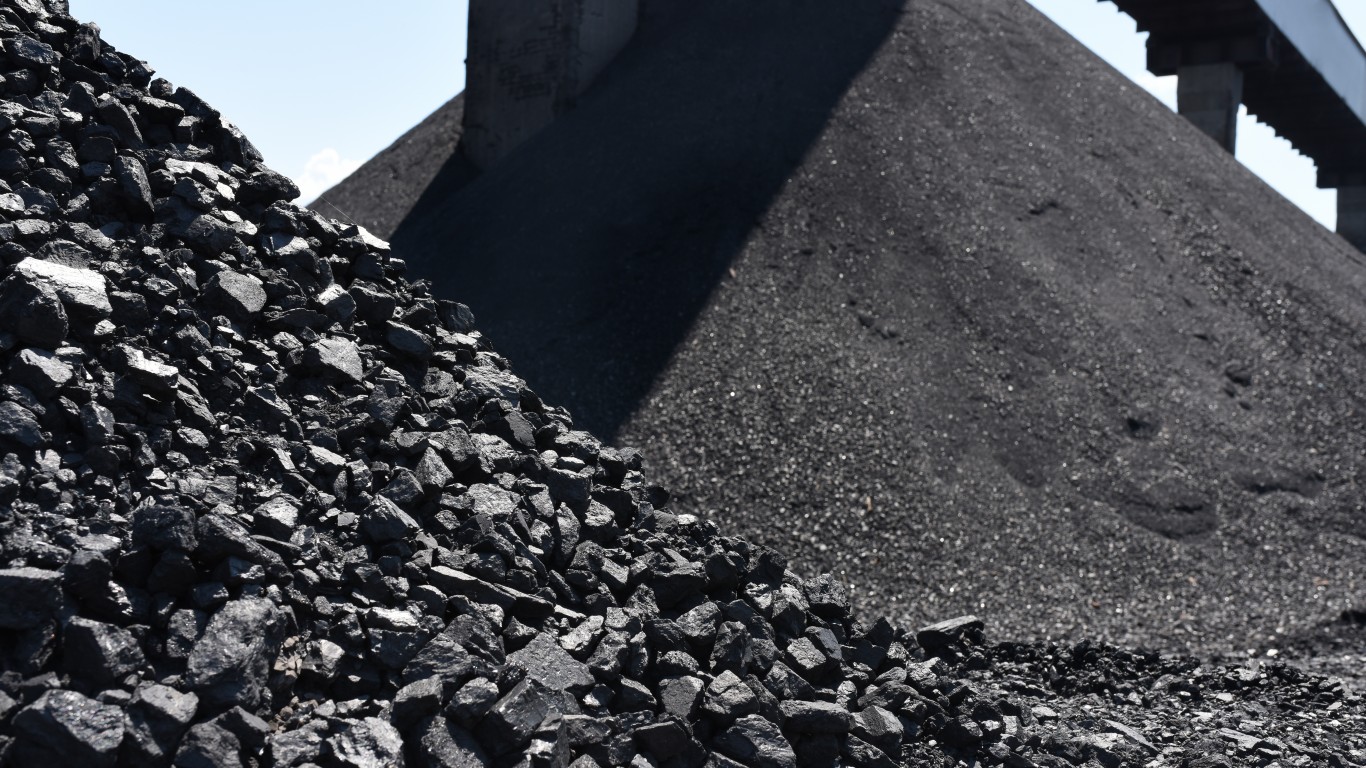
3. Industries
Ukraine’s major industries are coal, electric power, ferrous and nonferrous metals, machinery and transport equipment, chemicals, and food processing.
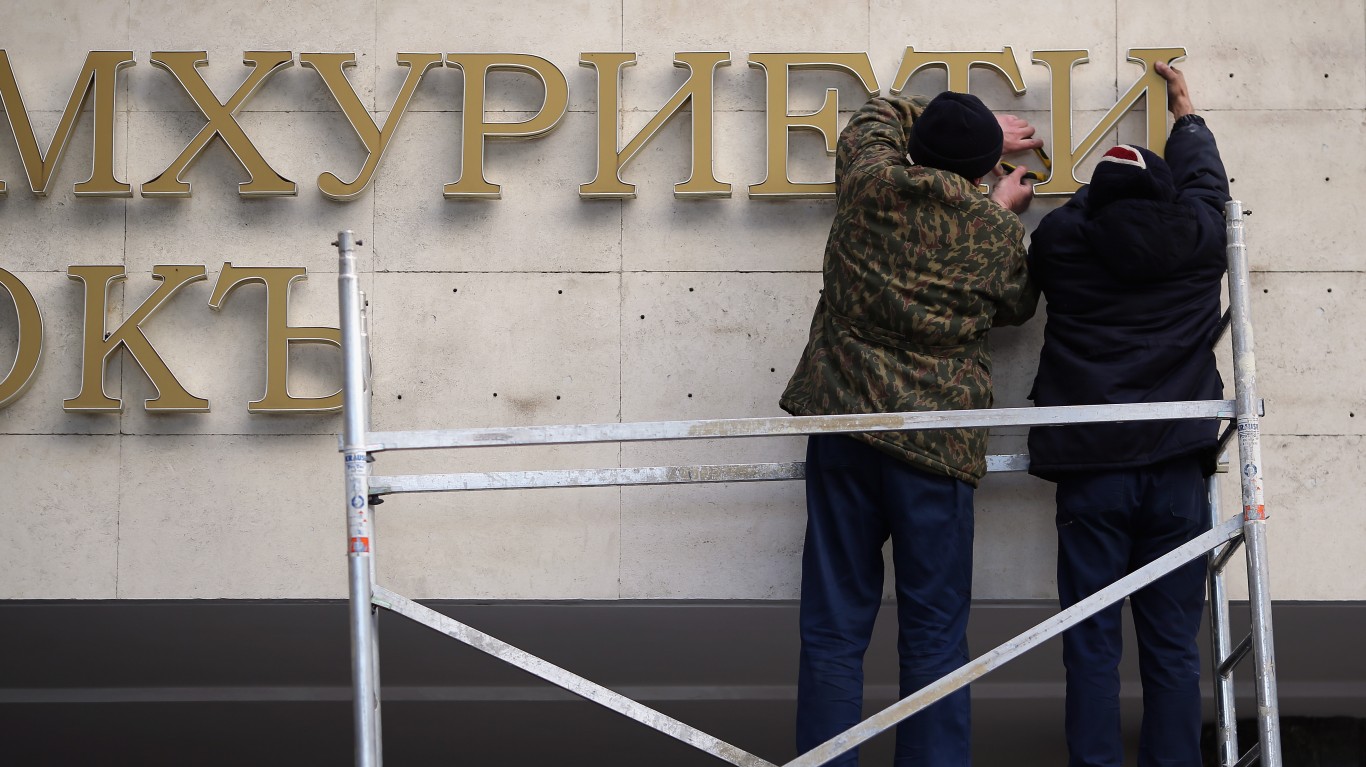
4. Lost land to Russia
Prior to the 2022 invasion, Russia had shown aggression along its border with Ukraine – primarily demonstrated by Russia’s invasion and annexation of Crimea in March 2014. Approximately 16,650 square miles, or about 7.1% of Ukraine’s area, is Russian occupied. The seized area includes all of Crimea and about one-third of both Luhansk and Donetsk regions.
[in-text-ad-2]
5. Population
Ukraine’s population was 43,745,640, as of July 2021, the 34th-largest population in the world. However, as of late March 2022, an estimated 4 million Ukrainians have fled their country, according to the United Nations High Commissioner for Refugees. Most have gone to Poland.

6. Executive branch
Ukraine’s head of state is President Volodymyr Zelenskyy, who took office in May 2019.
[in-text-ad]
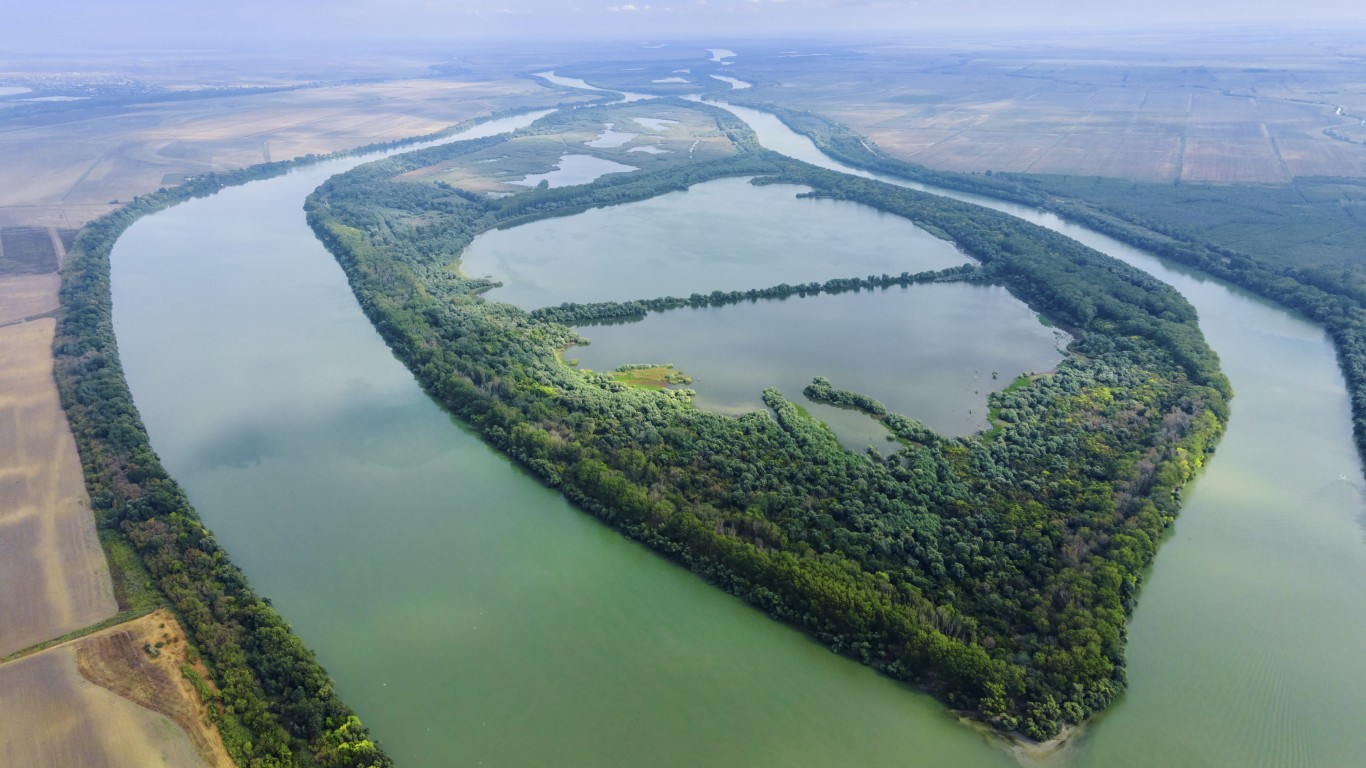
7. Major rivers
Ukraine has several major rivers, including the Danube, Dnieper, Dniester, and Vistula – all of which stretch for over 750 miles in the country.

8. Major cities
Ukraine’s densest settlement is in the eastern (Donbas) and western regions. Its major population centers include the urban areas around Kyiv, Kharkiv, Donetsk, Dnipropetrovsk, and Odessa.
9. Top exports
Ukraine’s leading exports are corn, sunflower seed oils, iron and iron products, wheat, and insulated wiring.
[in-text-ad-2]

10. Top imports
Ukraine’s main imports are refined petroleum, cars, packaged medicines, coal, and natural gas.

11. Military expenditures
Ukraine spends an estimated 4% of its gross domestic product on its military, the 19th-highest share in the world. For context, the U.S. spends 3.5% of its GDP on the military.
[in-text-ad]
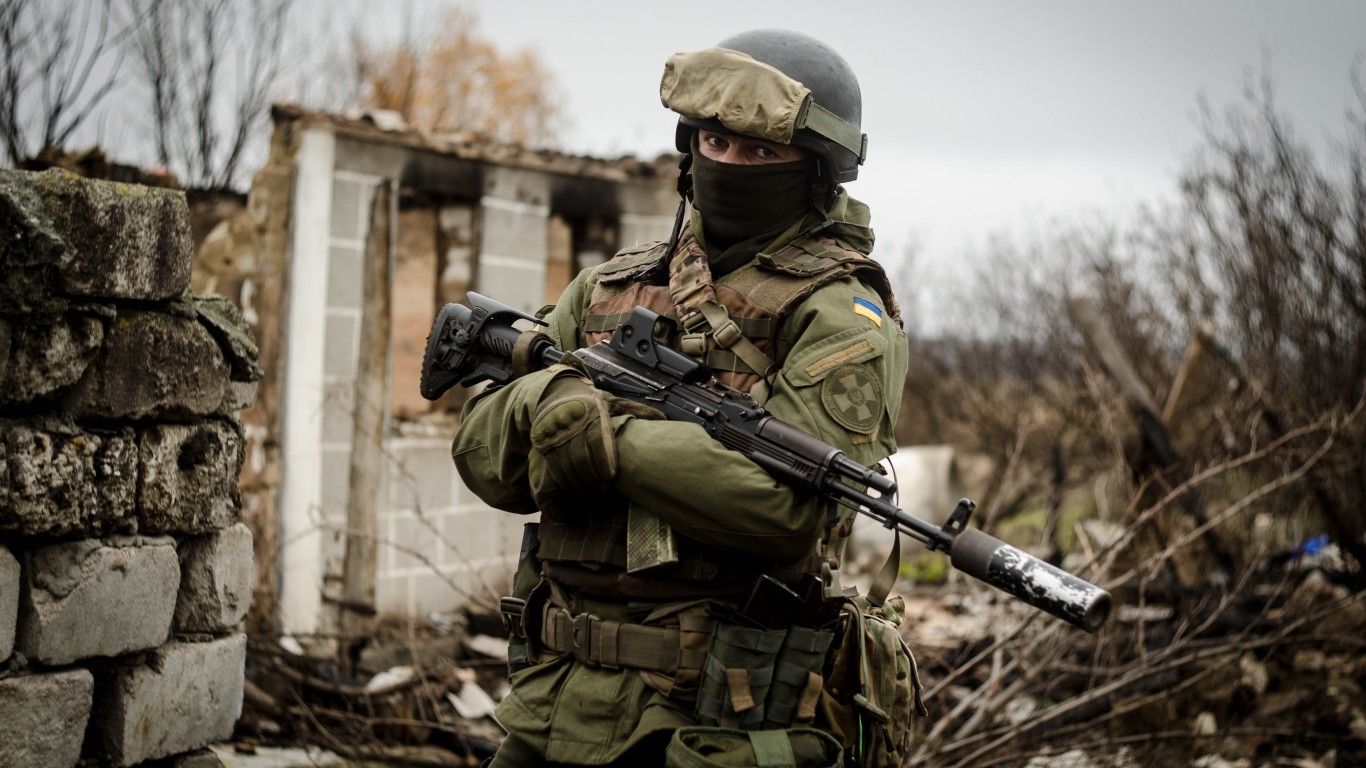
12. Large army
Ukraine has one of the largest military forces in the world, with approximately 200,000 active troops: 125,000 in the Army, 40,000 in the Air Force, 25,000 in the Airborne and Air Assault Forces, 10,000 in the Navy, and 2,000 in its Special Operations Forces. Ukraine also has approximately 50,000 National Guard troops. Also, in early 2022, the Ukrainian government announced plans to add 100,000 personnel to the armed forces over three years.

13. Ethnic groups
Ukraine’s largest ethnic group is Ukrainian, at 77.8%. The next largest groups are Russians (17.3%), Belarusian (0.6%), Moldovan (0.5%), and more.

14. Languages
The nation’s official language is Ukrainian, which is spoken by 67.5% of the population. Nearly 30% of the country speaks Russian primarily.
[in-text-ad-2]
15. Religions
Nearly all of Ukraine’s population is Christian, and two-thirds of Christians identify as Orthodox, but many do not specify a particular branch. Other religions include Ukrainian Greek Catholic, Roman Catholic, Protestant, Muslim, and Jewish.
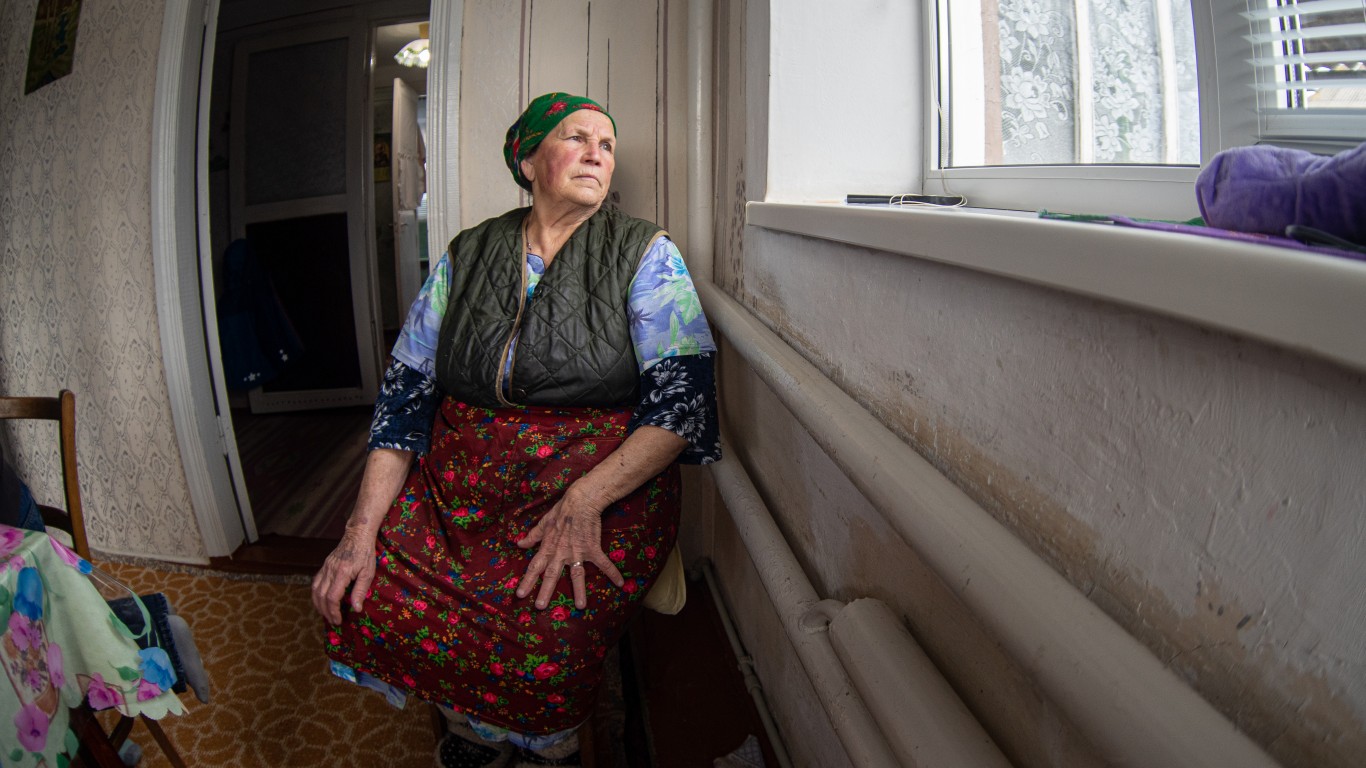
16. Declining population
Even prior to the war, Ukraine had been shrinking faster than nearly all other nations. As of 2021, the nation’s population growth rate was -0.49%, ranking 226th out of 236 countries with data.
[in-text-ad]
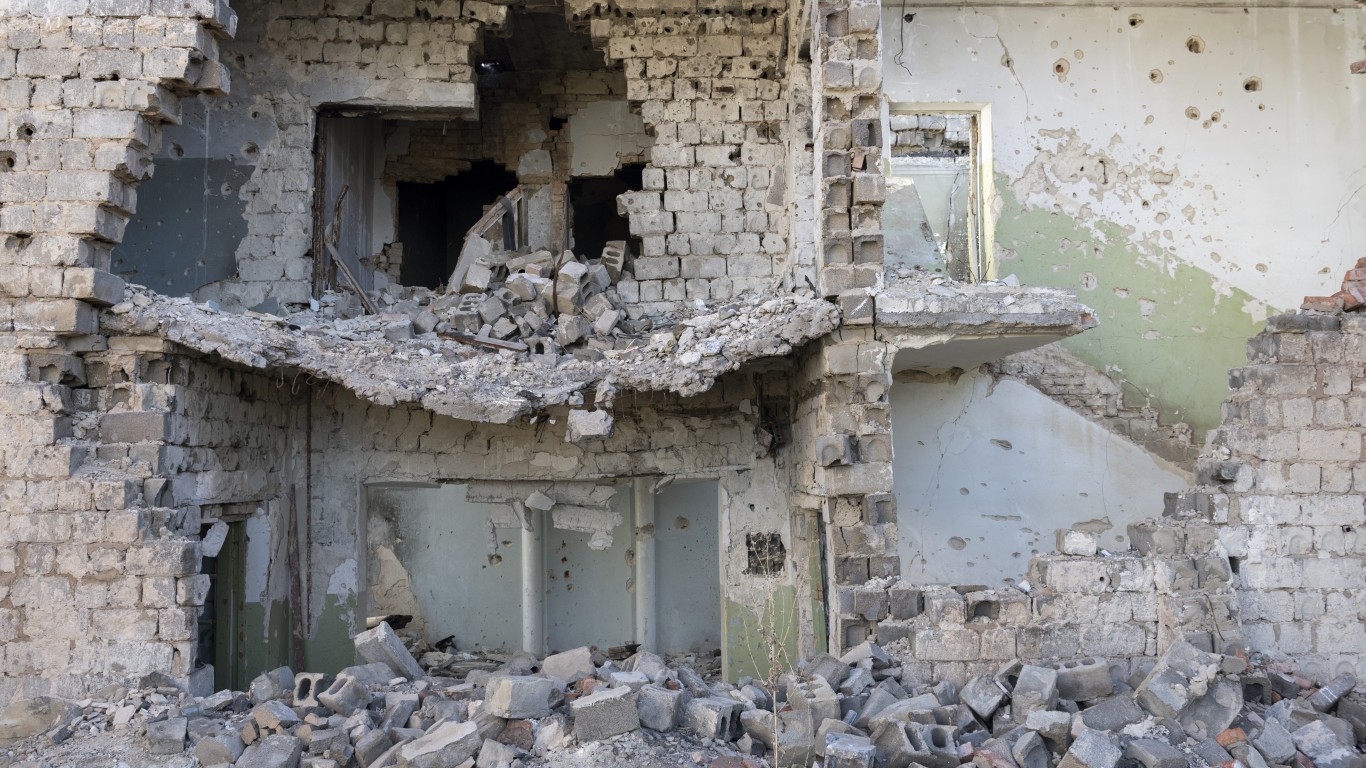
17. High death rate
Ukraine had the sixth-highest death rate in the world in 2022, at 13.77 deaths per 1,000 residents.

18. Life expectancy
The Ukrainian life expectancy at birth is 73.2 years – 68.5 years for men and 78.2 years for women. Ukraine ranks 149 out of 227 countries with data in life expectancy.
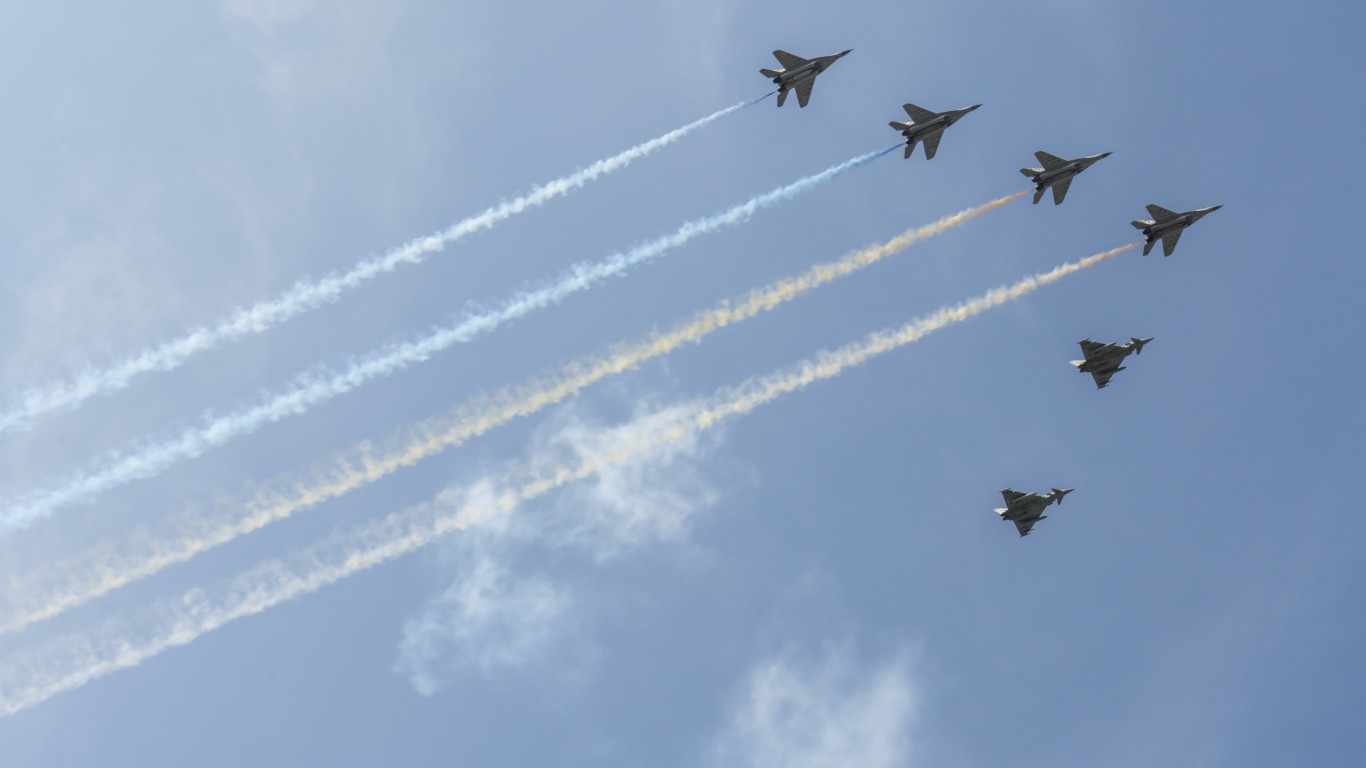
19. Independence
Ukraine celebrates its Independence Day on Aug. 24. It was on that date in 1991 when the country gained its independence from the Soviet Union.
[in-text-ad-2]
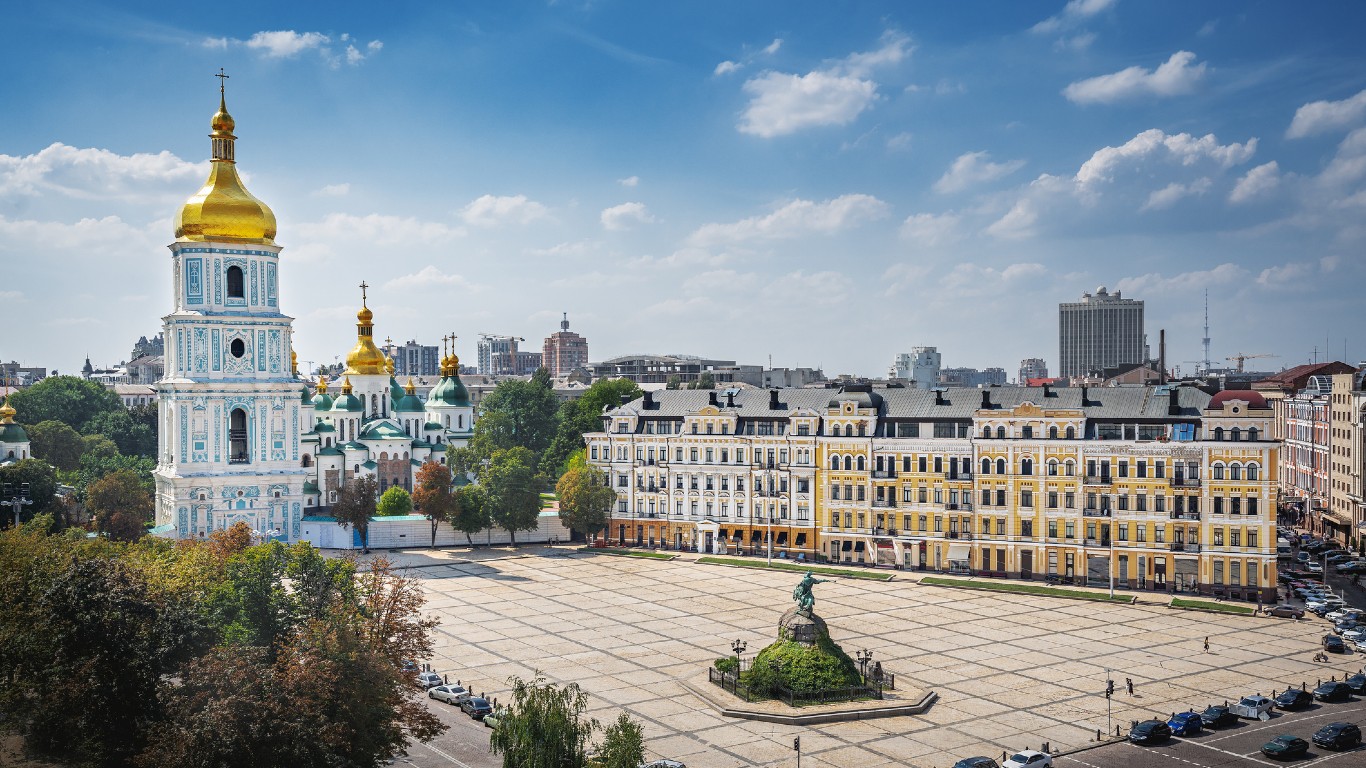
20. National heritage
Ukraine has seven World Heritage Sites – six cultural, and one natural. They are the Saint Sophia Cathedral and Related Monastic Buildings; the Lviv Historic Center; the Residence of Bukovinian and Dalmatian Metropolitans; Ancient City of Tauric Chersonese; Wooden Tserkvas of the Carpathian Region; Struve Geodetic Arc; and the Ancient and Primeval Beech Forests of the Carpathians.
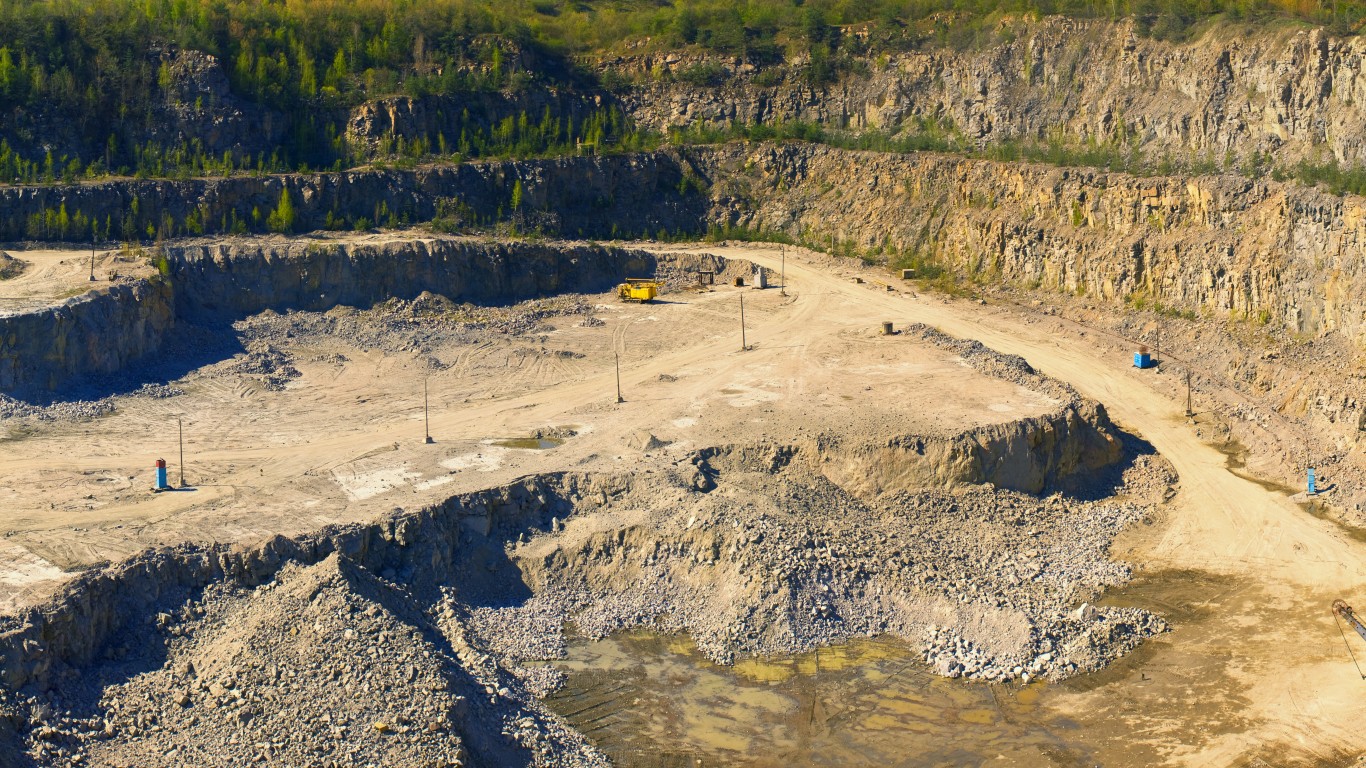
21. Economic size
Ukraine’s economy is the 40th-largest in the world, with a GDP (PPP) of $516.7 billion in 2020.
[in-text-ad]

22. Economic breakdown
Ukraine’s GDP composition by sector of origin is: services (60%), industrial (28.6%), and agriculture (12.2%). (Per the CIA, data may be incomplete, hence the total is not 100%.)
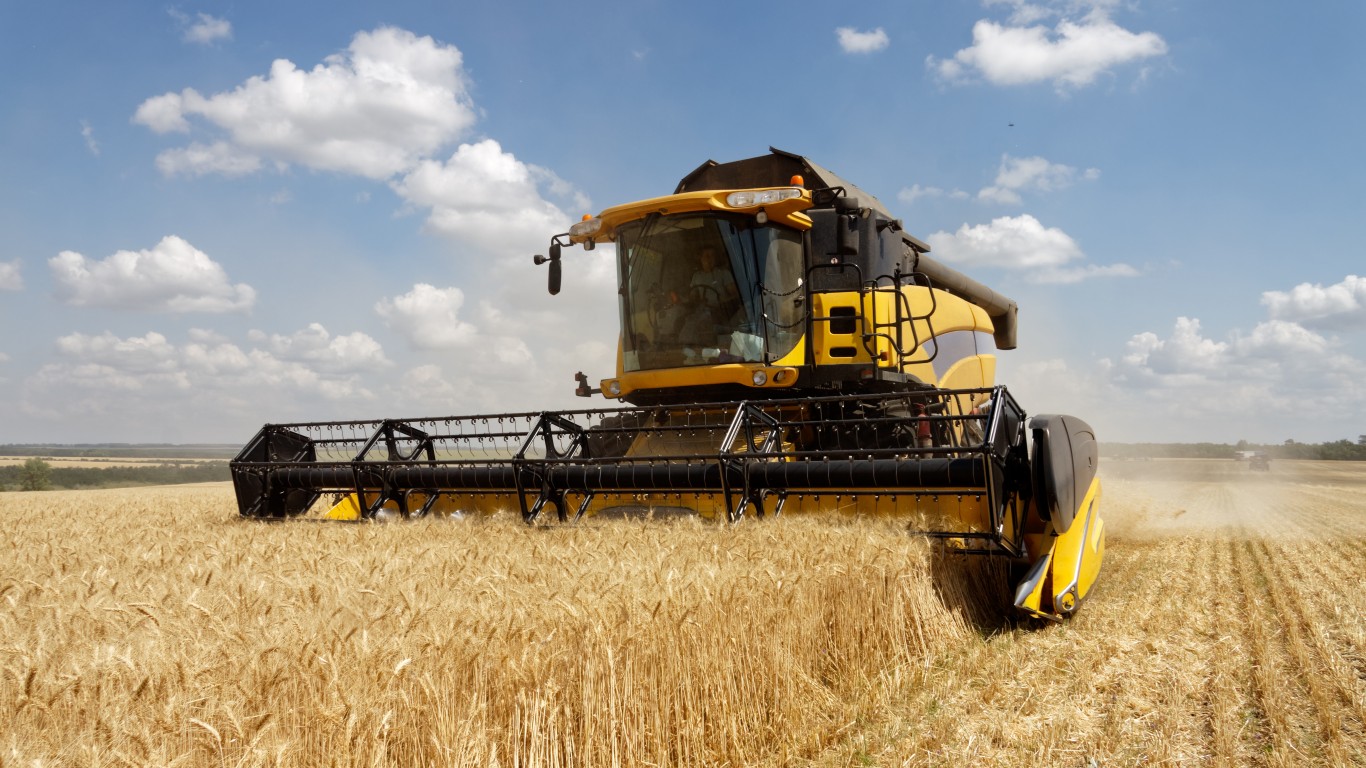
23. Farming powerhouse
When it was a part of the Soviet Union, Ukraine (then the Ukrainian Republic) was essential to feeding the USSR. It produced about a quarter of the USSR’s agricultural and food output, with Ukrainian farms providing meat, milk, grain, and vegetables.
24. Agricultural products
Ukraine’s top agricultural products are maize, wheat, potatoes, sunflower seed, sugar beet, milk, barley, soybeans, rapeseed, and tomatoes.
[in-text-ad-2]
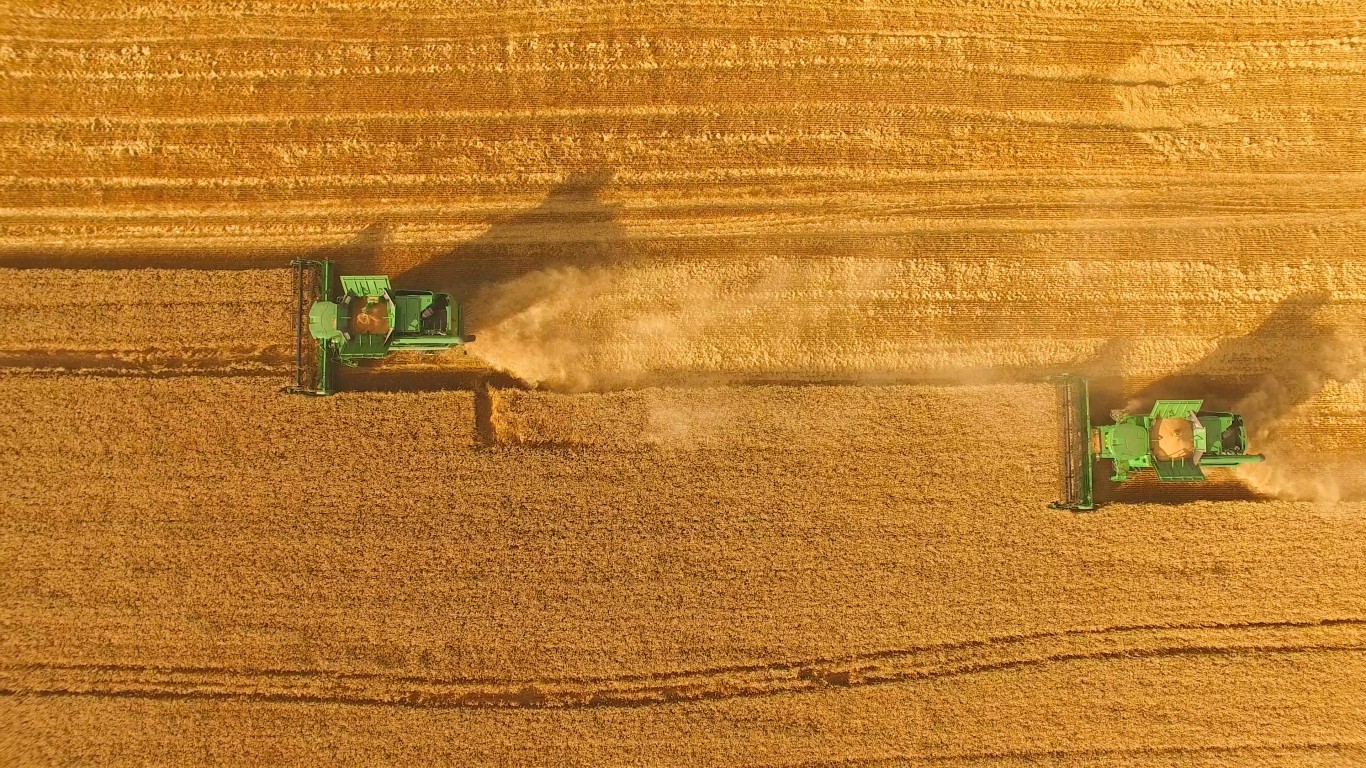
25. Farming
Ukraine’s landmass is 71.2% agricultural land. The next largest percentage is made up by forests, at 16.8%.

26. Capital of Kyiv
Ukraine’s capital city is Kyiv, which is located in the north-central part of the country along the Dnieper River. It is also Ukraine’s most populous city. Up until recent years, the name had been spelled “Kiev” in English. Today, this spelling is considered to be the Russian version, whereas “Kyiv” is based on the Ukrainian spelling.
[in-text-ad]

27. Natural resources
Ukraine’s natural resources are iron ore, coal, manganese, natural gas, oil, salt, sulfur, graphite, titanium, magnesium, kaolin, nickel, mercury, timber, and arable land.

28. Internet access
As of 2019, 58.9% of Ukrainians had internet access – nearly 30 million people.

29. Highest and lowest points
The highest point in Ukraine is Hora Hoverla – a peak in the Carpathian Mountains, at 2,061 meters (6,762 feet) above sea level. Its lowest point is where the country meets the Black Sea, at sea level.
[in-text-ad-2]
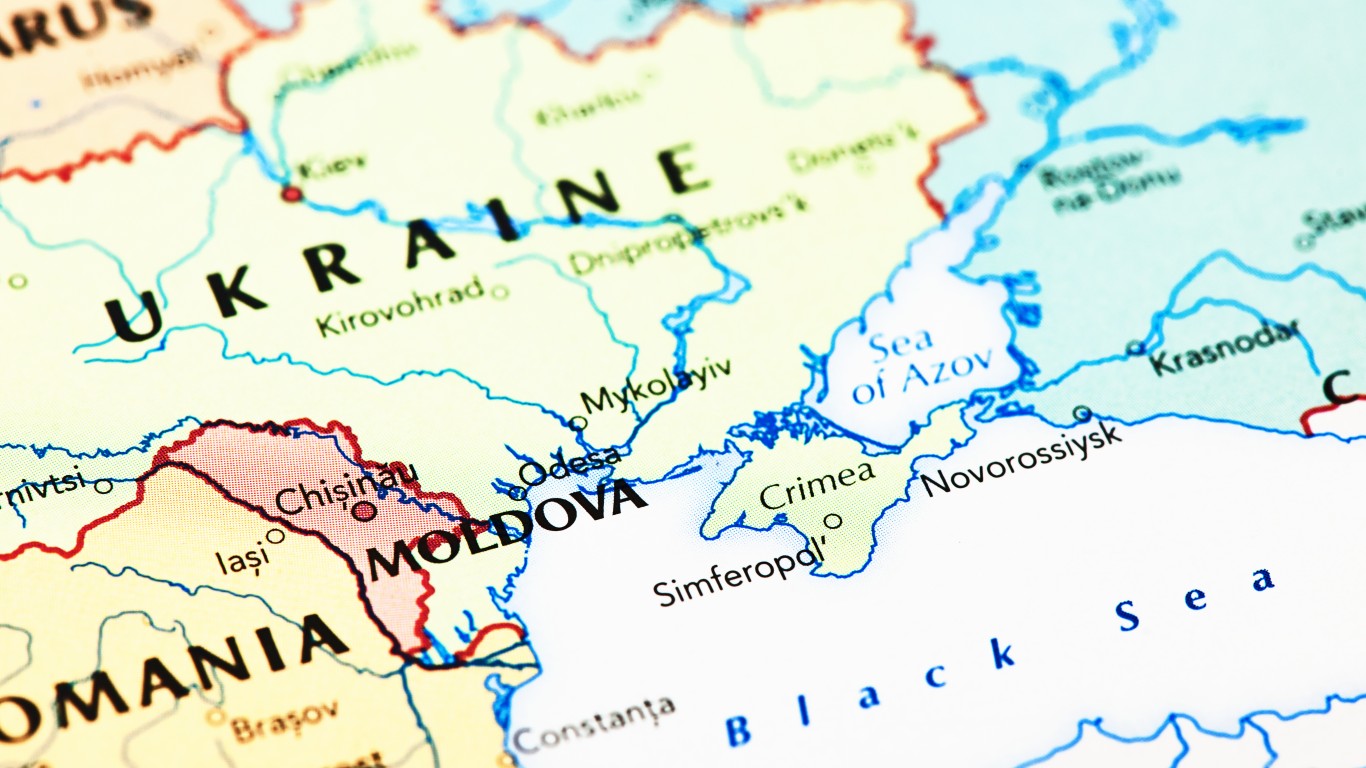
30. Economic struggles
Ukraine’s economy fell into crisis because of Russia’s annexation of Crimea in 2014 and the ensuing trade war with Russia. This resulted in a 17% decline in GDP and inflation at near 60%.

31. High youth unemployment
Prior to the war, Ukraine had a relatively high youth unemployment rate. In 2020, residents ages 15 to 24 had a jobless rate of 19.3%, which ranked 83rd-highest in the world.
[in-text-ad]
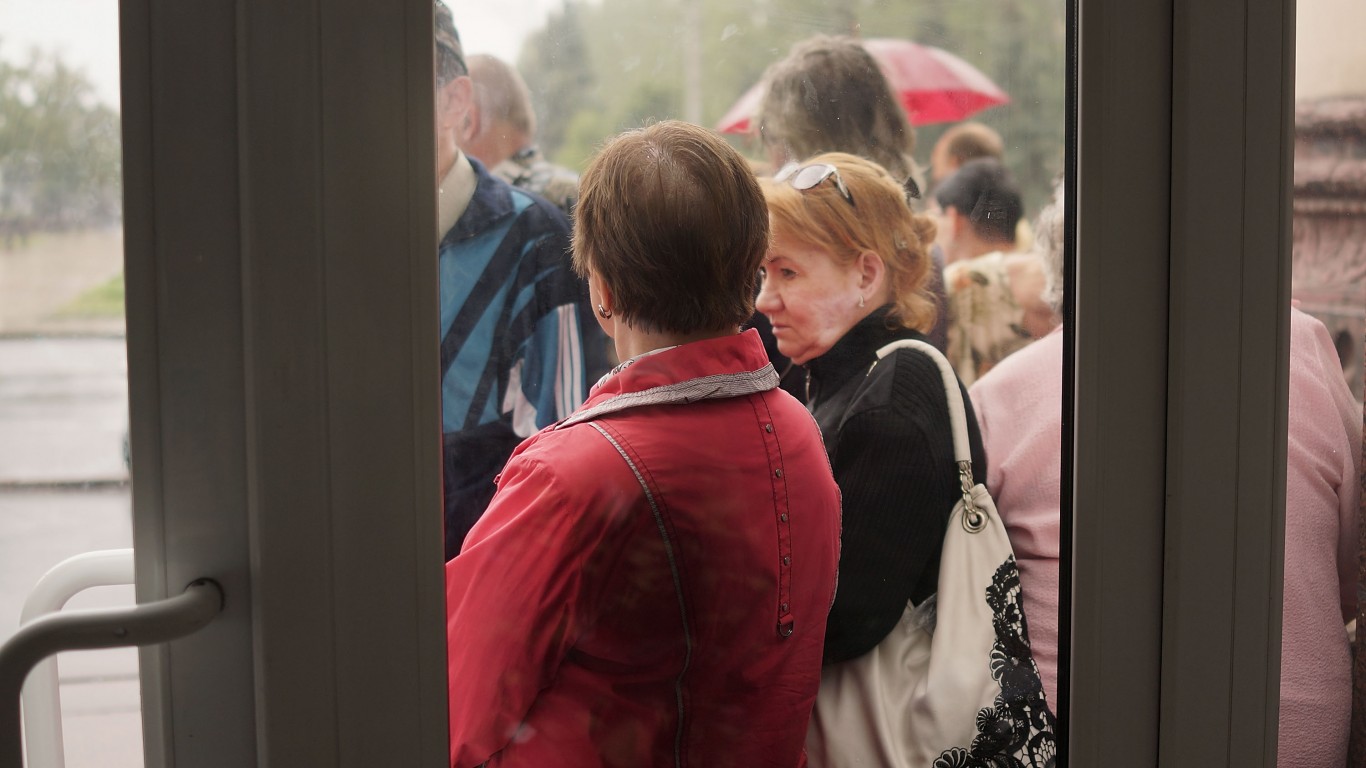
32. Low poverty rate
As of 2019, the most recent year for which data is available, Ukraine had one of the lowest poverty rates in the world, at 1.1%.
Credit Card Companies Are Doing Something Nuts
Credit card companies are at war. The biggest issuers are handing out free rewards and benefits to win the best customers.
It’s possible to find cards paying unlimited 1.5%, 2%, and even more today. That’s free money for qualified borrowers, and the type of thing that would be crazy to pass up. Those rewards can add up to thousands of dollars every year in free money, and include other benefits as well.
We’ve assembled some of the best credit cards for users today. Don’t miss these offers because they won’t be this good forever.
Flywheel Publishing has partnered with CardRatings for our coverage of credit card products. Flywheel Publishing and CardRatings may receive a commission from card issuers.
Thank you for reading! Have some feedback for us?
Contact the 24/7 Wall St. editorial team.
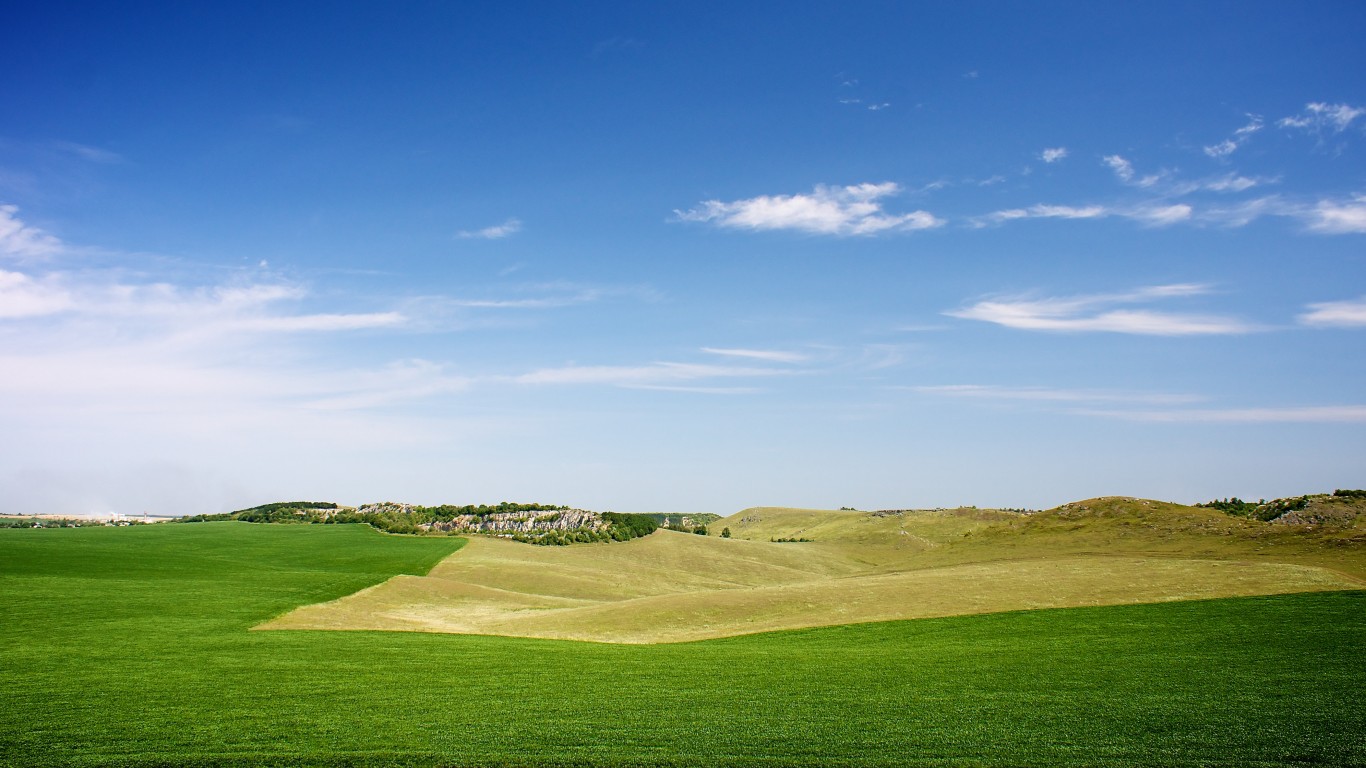
 24/7 Wall St.
24/7 Wall St.
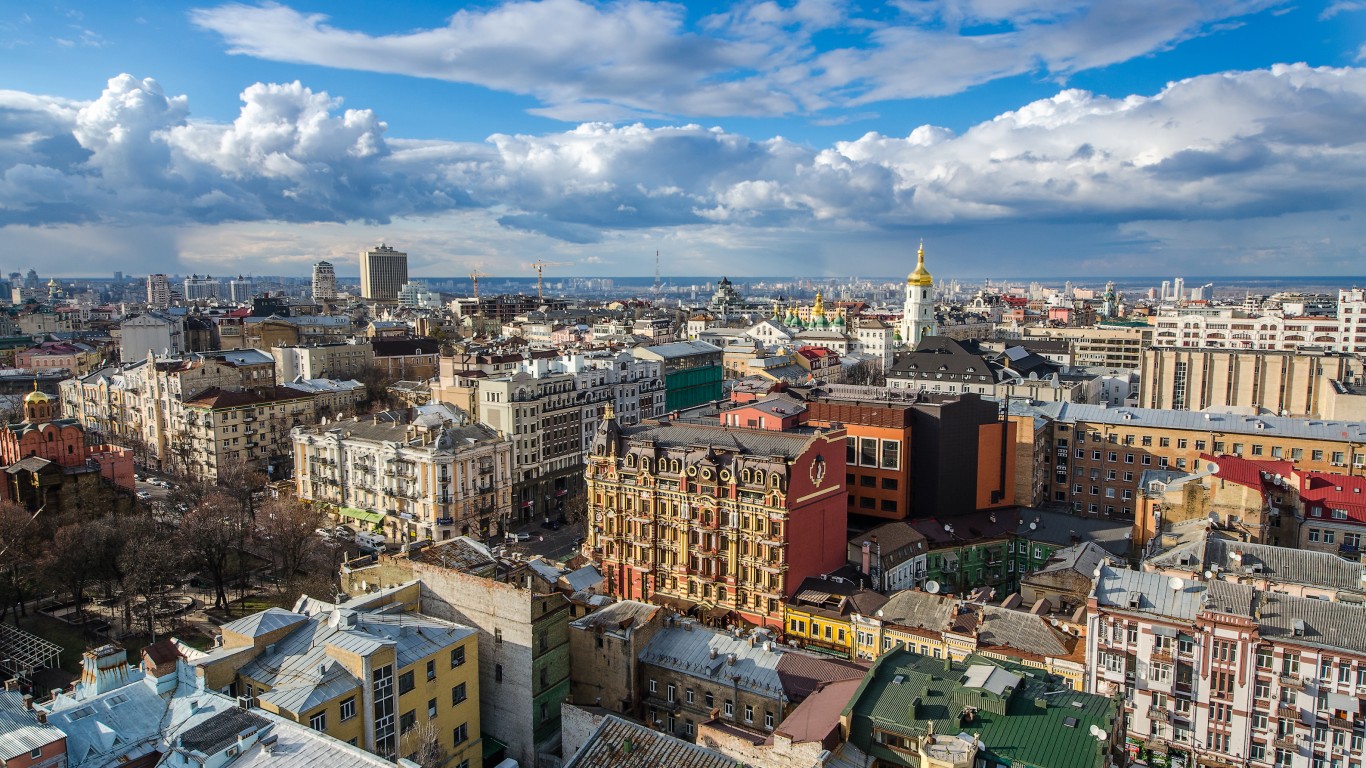 24/7 Wall St.
24/7 Wall St.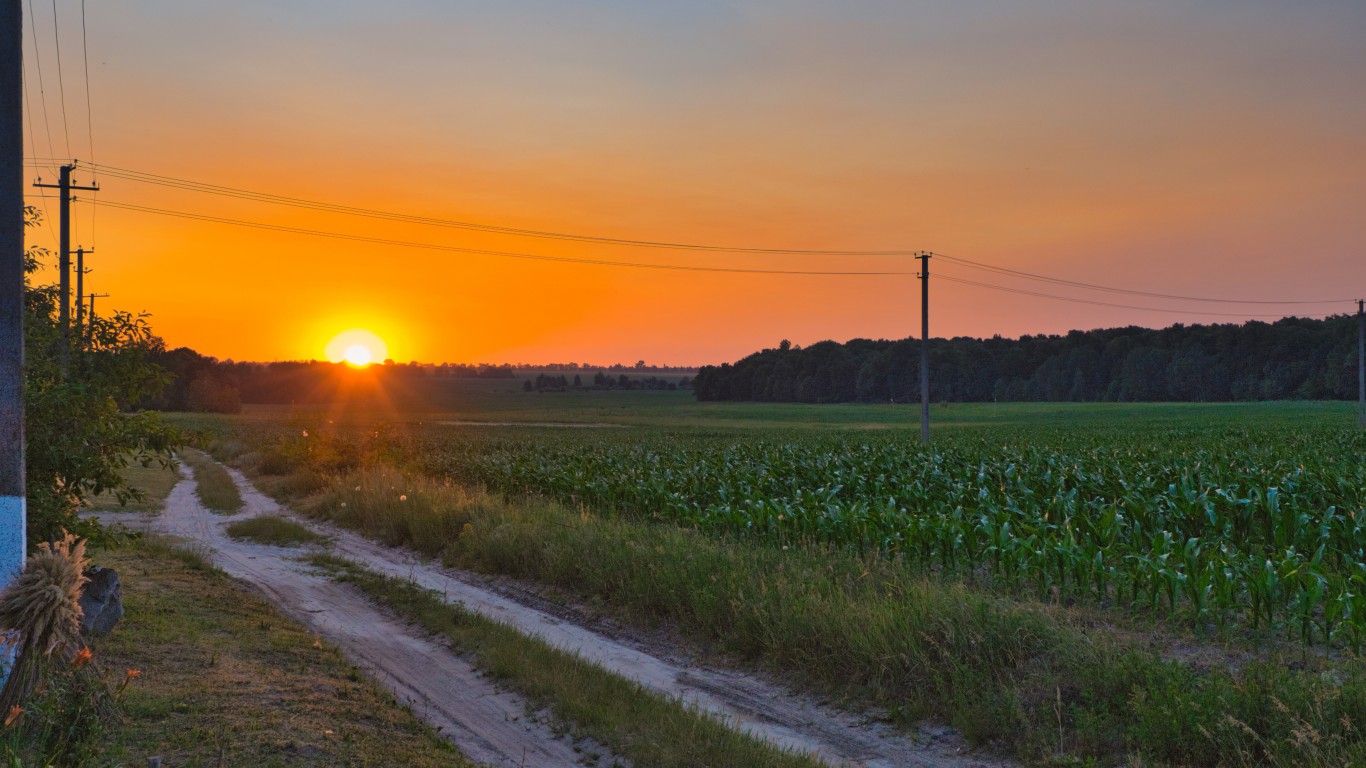
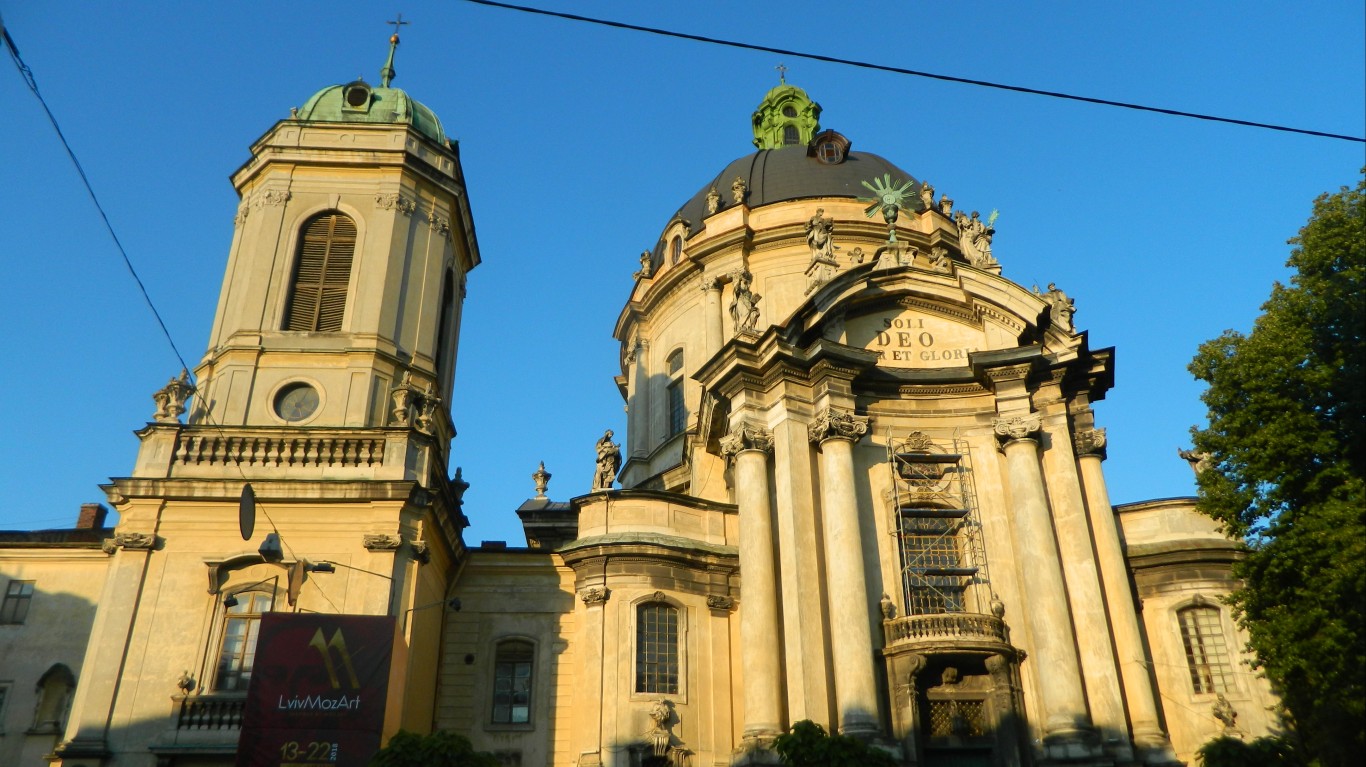
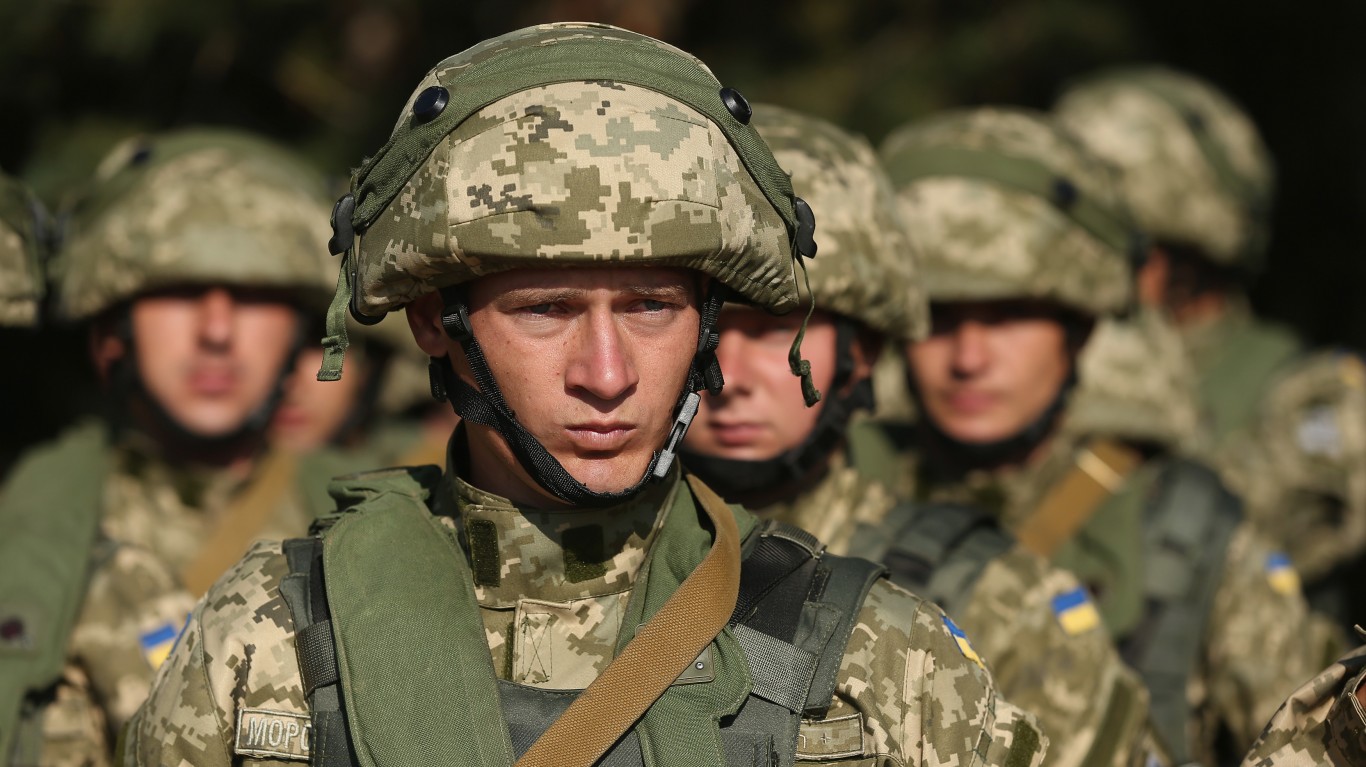 24/7 Wall St.
24/7 Wall St.